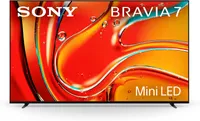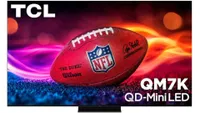Best 85-inch TVs in 2025: we've tested QLEDs, OLEDs and Mini-LEDs
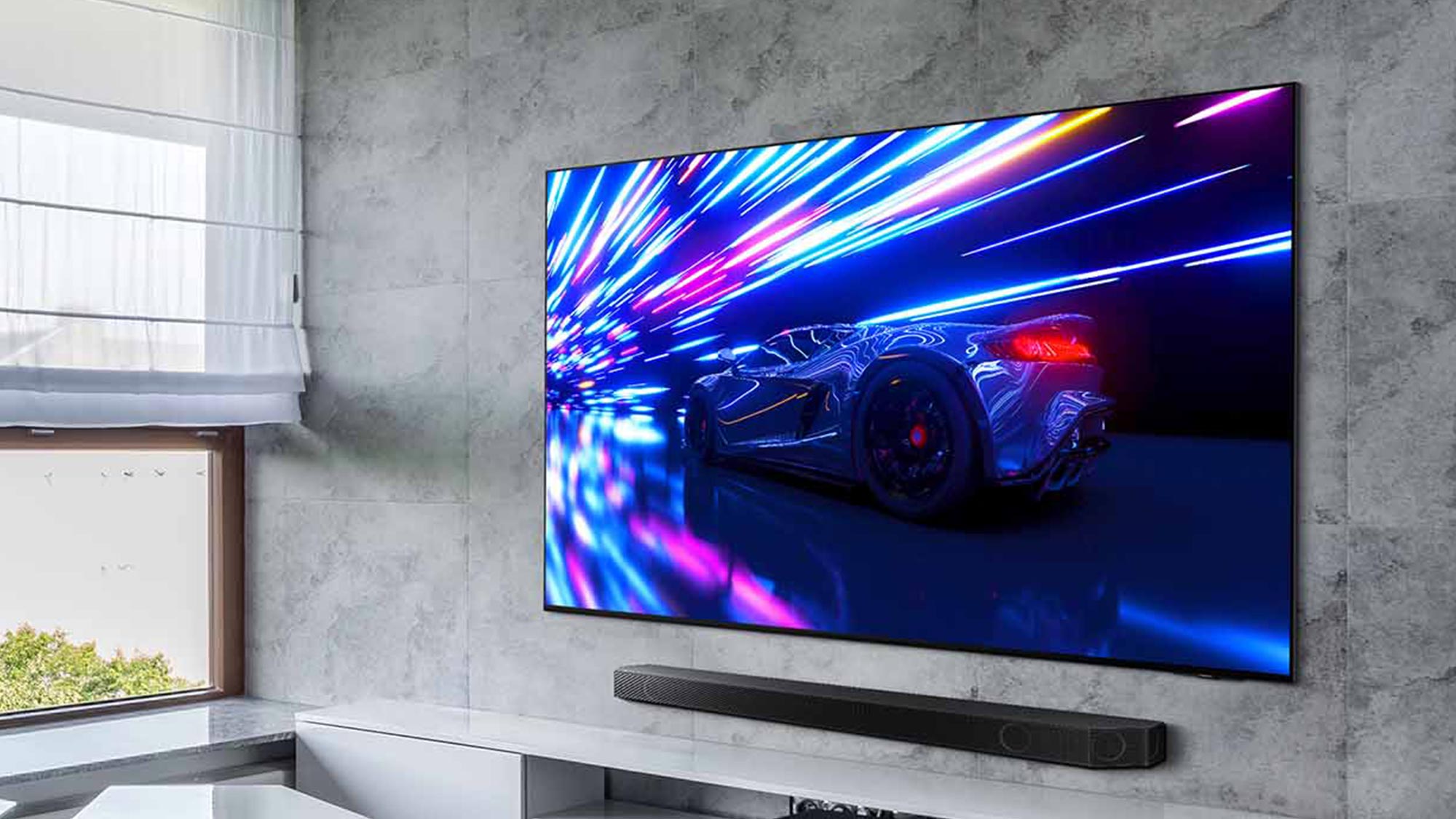
I've been evaluating TVs for over ten years, and it's plain to see that 85-inch TVs are on the rise.
The best 85-inch TVs bring the movie theater experience to your home. They're incredibly immersive — I've lost hours of a workday to an Xbox and an 85-inch TV.
Every year, we test and review the best TVs on the market, including many 83- and 85-inch TV models. The best 85-inch OLED TVs, for instance, are actually 83 inches. This is standard across all OLED TVs.
In fact, the 83-inch LG C5 is our current pick for the best 85-inch TV you can buy. It delivers the best blend of performance, features and value in this extra-large size range. If that's too pricey, don't sweat it — there are more affordable 85-inch TVs to shop, too.
While sizing up these upsized TVs, I look for many of the same performance traits that I look for when testing smaller TVs. There are, however, some key things to consider when shopping for a TV at this size. I'll let you in on all of the key takeaways as we round up the best 83- and 85-inch TVs right now.
The quick list
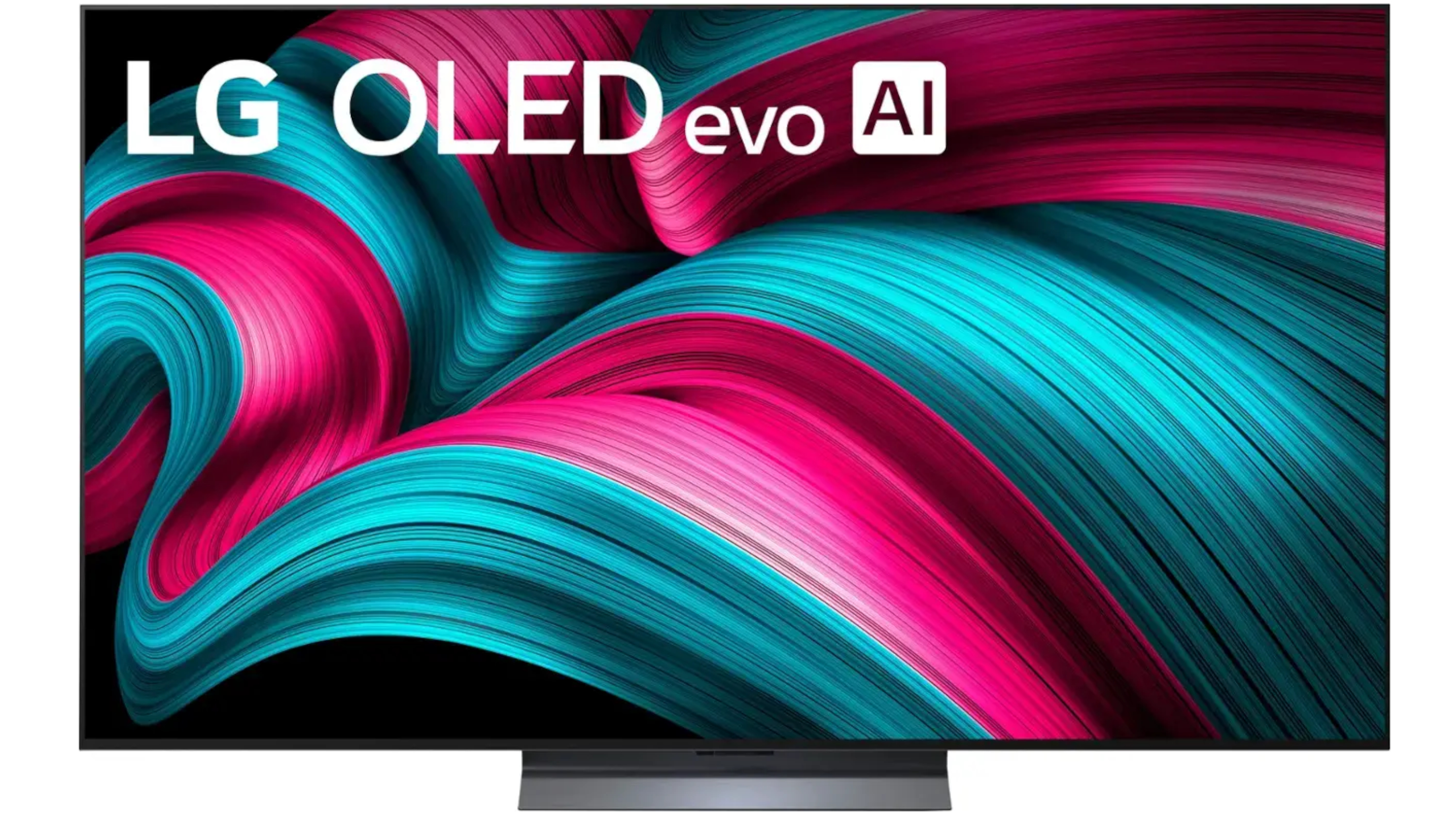
The LG C5 is the all-around best TV in the 83- to 85-inch size range. It delivers incredible performance, comes with a long list of features for gaming and more, and doesn't cost as much as most high-end flagships.
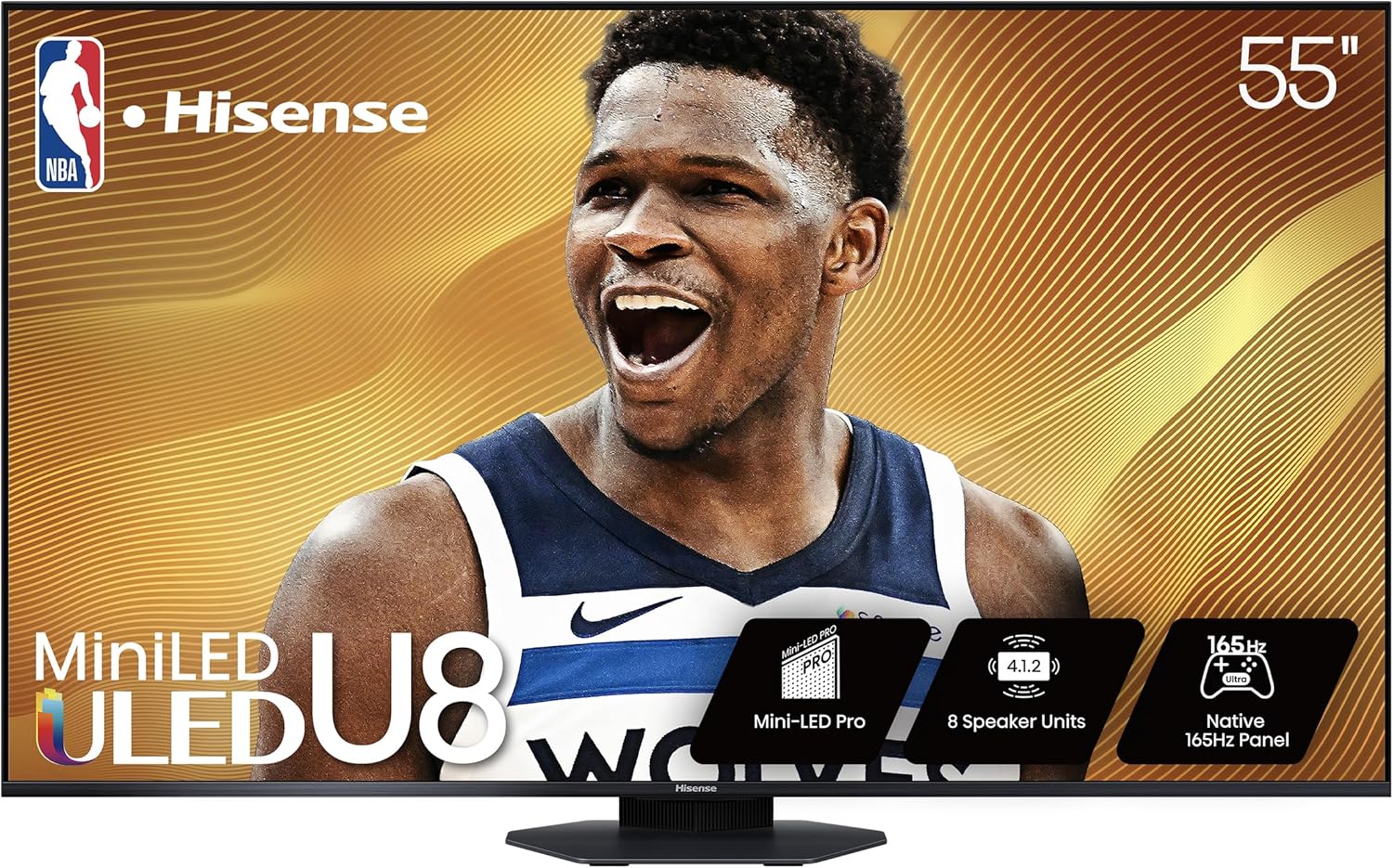
The 85-inch Hisense U8QG is a fantastic pick for bright-room viewing, as it's one of the brightest TVs we've ever tested.

The TCL QM6K isn't the cheapest 85-inch TV you can find, but it's the best 85-inch model below $1,500 thanks to Mini-LED backlighting, decent performance and some handy features.

The Samsung S95F is one of the best OLED TVs ever made. Its picture quality is jaw-dropping and it's packed with features. The 83-inch version is very, very pricey.
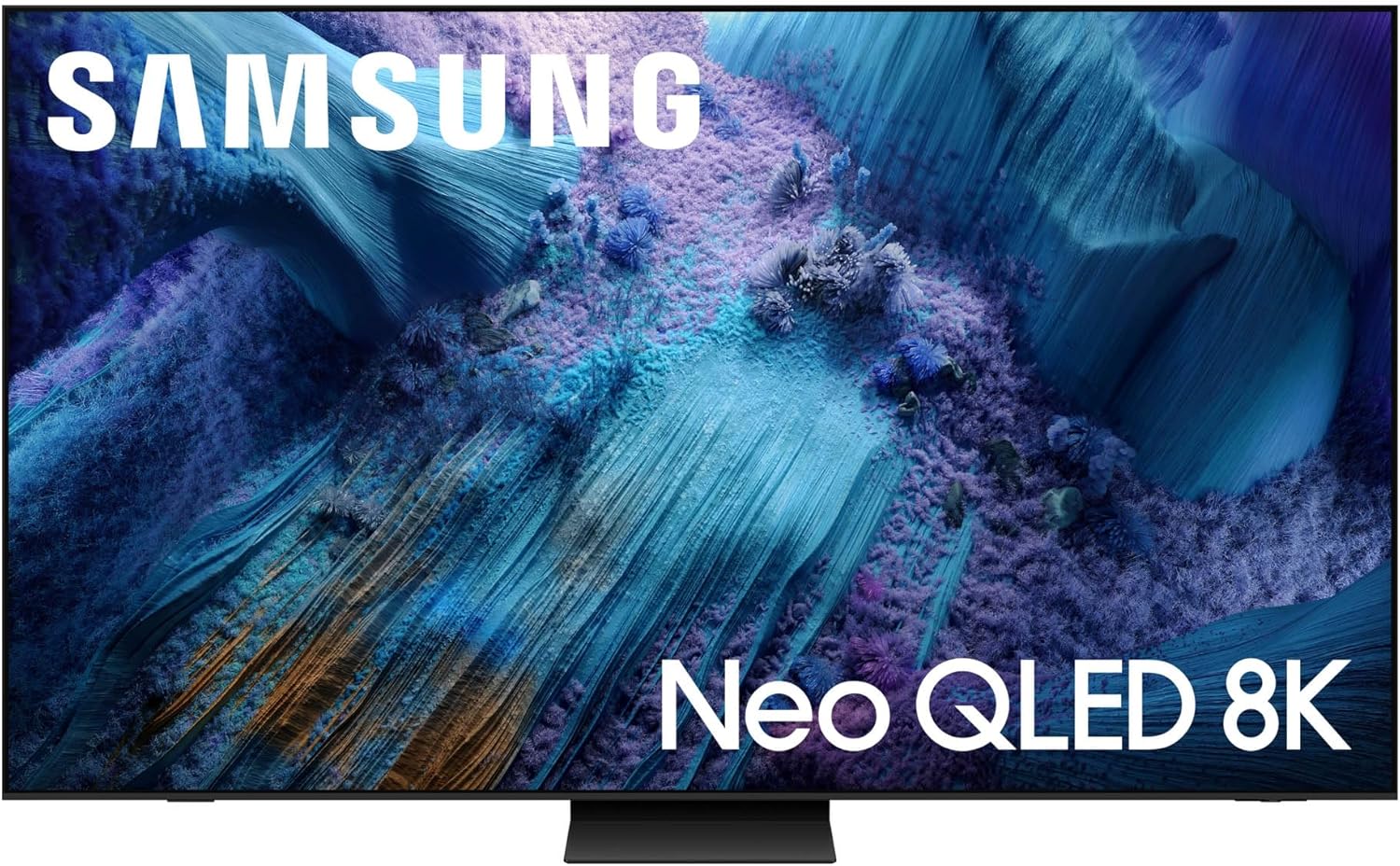
This 8K, 85-inch beast is anything but cheap, but there aren't that many of its type on the market today. If you care about 8K resolution, this is the TV to buy.
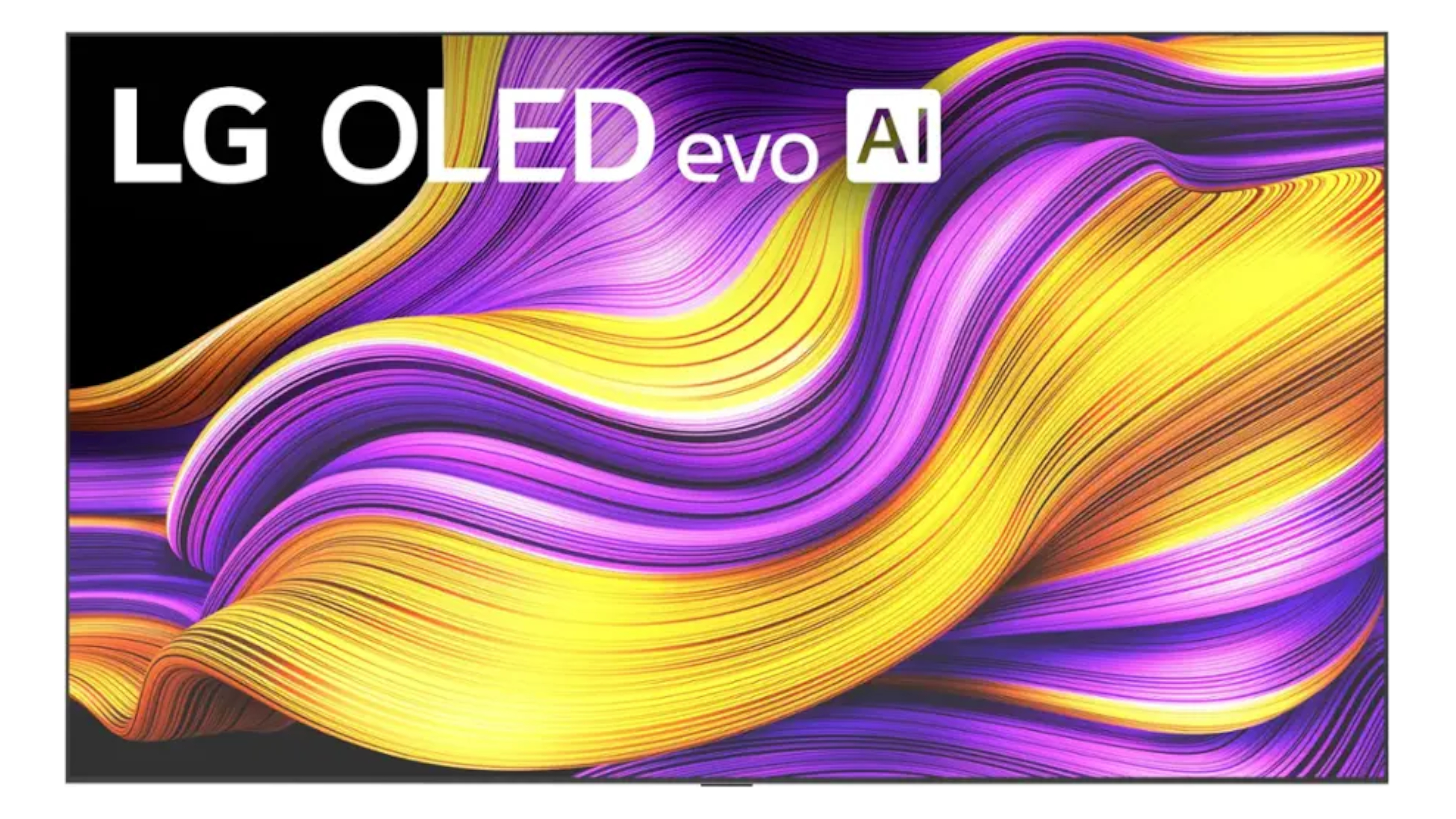
The LG G5 OLED is one of the best gaming TVs ever made. It's also one of the best OLED TVs ever made, too. Just keep in mind that its stand is sold separately.
About the author

My name is Michael, and for over a decade, I’ve been testing and reviewing TVs, including more 85-inch TVs than I can count. I've seen big-screen TVs up close, and I know what makes them succeed and what to look out for if you're shopping for something at this larger-than-life size point. Before joining Tom’s Guide, I covered TVs at Reviewed, a division of USA Today. Throughout my time in various TV labs, I’ve come to learn that there’s a huge difference between the best TV you can buy, and the best TV for you.
The best 85-inch TVs you can buy right now
Why you can trust Tom's Guide
Best 85-inch TV overall


Specifications
Reasons to buy
Reasons to avoid
The 83-inch LG C5 OLED is our top pick for TVs in the 83- to 85-inch size range. As LG’s mid-range OLED for 2025, the C5 is a near-perfect blend of performance and value.
As an OLED TV, every pixel in the C5’s 4K display is self-illuminating. This allows for incredible contrast and perfect black levels without light bloom. And, while the C5 isn’t nearly as bright as top-shelf 83-inch OLED TVs, you’re still getting ample HDR highlight brightness for a deep, detail-rich picture.
Few TVs in the 83- to 85-inch size range are as flush with features as the LG C5. It offers Dolby Vision support and a class-leading selection of gaming features, like the following: four HDMI 2.1-compatible inputs, LG’s Game Optimizer mode, Variable Refresh Rate (VRR) and AMD FreeSync Premium support for ultra-smooth gameplay. The C5 supports 4K games at 120Hz and up to 144Hz.
The LG C5 OLED is the TV I’m most likely to recommend this year for everyone — not just those shopping for TV at 83 or 85 inches.
- Read our full LG C5 OLED review
Best value 85-inch TV


Specifications
Reasons to buy
Reasons to avoid
The 85-inch Hisense U8QG isn't the most affordable 85-inch TV you can buy, but it offers an incredibly bright, versatile performance profile for the price. It's a good pick for shoppers who want to save a bit on an 85-inch TV without compromising too much on picture quality.
The U8QG is one of the brightest TVs we've ever tested, and although its Mini-LED backlighting struggles to limit light bloom on occasion, you'll be happy to have this amount of brightness during daytime viewing.
Gamers are getting plenty of goodies in the form of VRR, ALLM and support for 4K gaming at up to 165Hz, but keep in mind that the U8QG only offers three HDMI inputs. They're all HDMI 2.1-compatible, though, which is helpful.
- Read our full Hisense U8QG Mini-LED TV review
Best 85-inch TV under $1,500
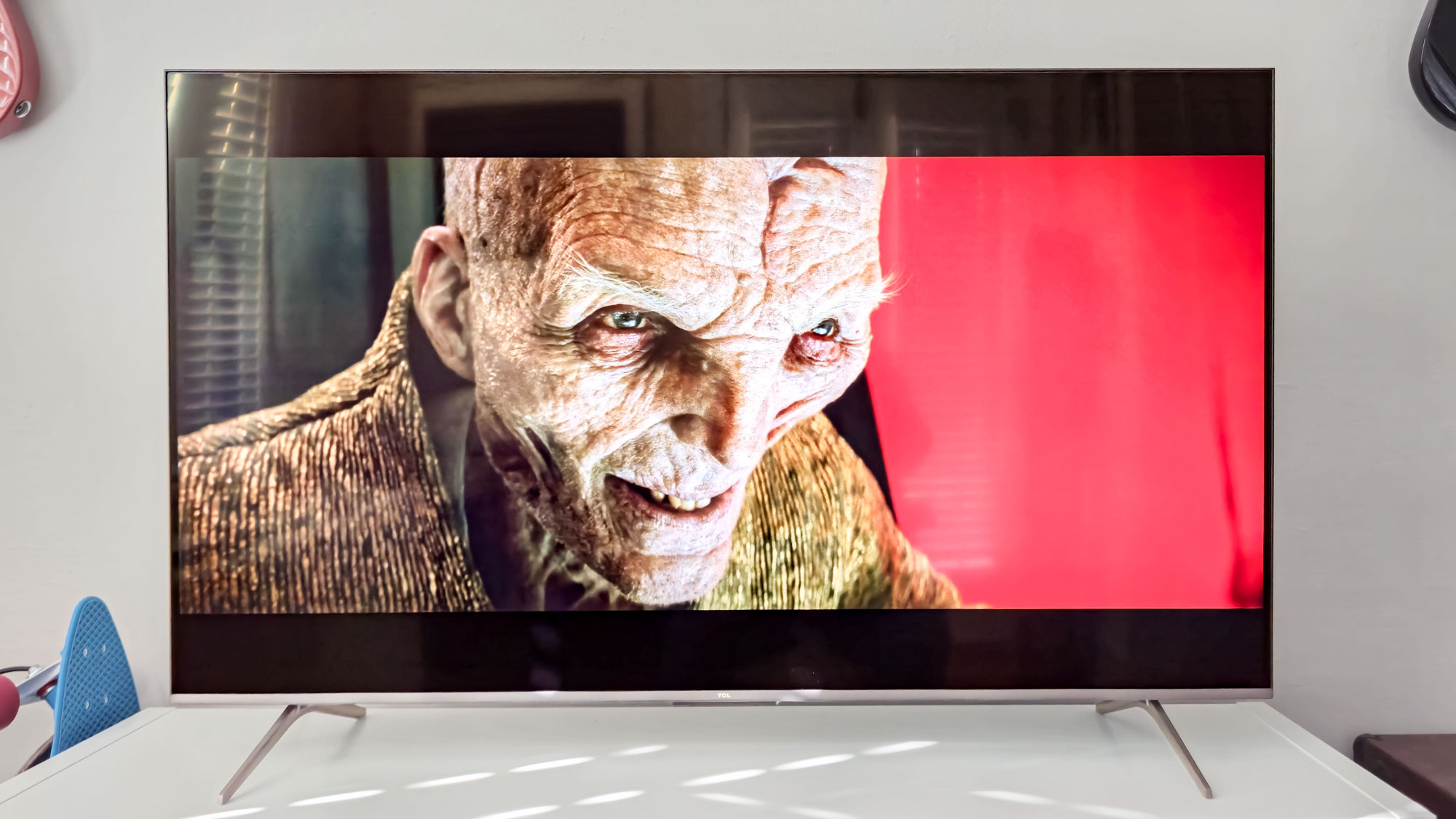

Specifications
Reasons to buy
Reasons to avoid
TCL's entry-level Mini-LED TV for 2025, the QM6K, is the best 85-inch TV for under $1,500. It's not as packed with features as higher-end 85-inch TVs, nor is its picture quality as impressive, but there's a ton of value here for folks shopping for a big-screen TV on a budget.
I would be hesitant to put the QM6K in a sun-soaked room, but if your living space gets an average amount of light and you do most of your viewing in the evening, you can rest easy — the QM6K is bright enough to get the job done.
It's also equipped with Mini-LED backlighting rather than basic LEDs, which is a great feature to have at this price point. The smaller-sized Mini-LEDs allow for better backlight control and improved contrast.
You won't find a laundry list of features and enhancements with the QM6K, but it comes with Google TV and a handful of useful gaming features. It supports 4K gaming up to 144Hz, for instance.
This is the 85-inch TV to buy if you want to save money and still walk away feeling impressed by your purchase.
- Read our full TCL QM6K review
Best 85-inch OLED TV
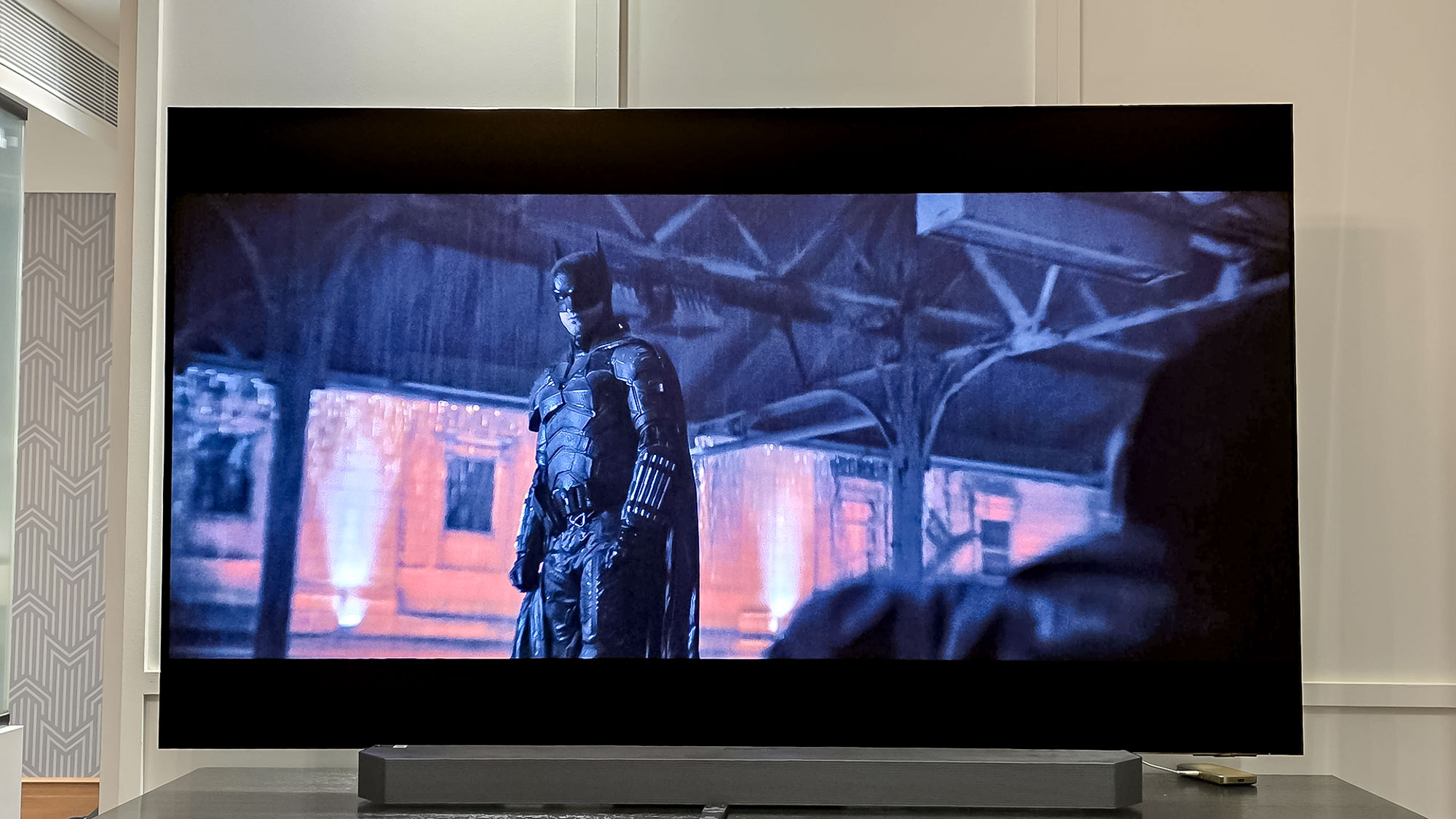

Specifications
Reasons to buy
Reasons to avoid
If you’re looking for the best OLED experience at this size point, the Samsung S95F is the best pick for most people..
An argument could be made that the 83-inch G5 OLED edges out the S95F in the OLED category, but the S95F’s incredible color volume — as well as the inclusion of its stand — puts it over the top.
The S95F’s HDR highlight brightness is sensational. At over 2,000 nits, everything from bright skylines to the glint of a samurai sword look real enough to touch.
The addition of quantum dots — something you won’t find with the 83-inch LG G5 — allows for bold, pure color.
The S95F's screen features a divisive matte finish. In brighter rooms, the anti-reflective properties scatter light in such a way that raises black levels and flattens the image.
If you’re worried about this, I would recommend taking a closer look at the LG G5, whose screen is glossy and richer-looking in bright rooms, but doesn’t handle direct glare as well.
Like all Samsung TVs, the S95F snubs Dolby Vision in favor of the royalty-free HDR10+ format. The former is more popular, but Dolby Vision content will still look terrific on the S95F. Gamers are covered, too. There are four HDMI 2.1 inputs, Samsung’s Game Hub is along for the ride, and the S95F supports 4K games up to 165Hz.
The S95F is pricey at any size point, but the 83-inch model is a doozy. This TV does not come cheap, but it's one of the biggest upgrades you can make to your home theater.
- Read our full Samsung S95F OLED review
Best 8K 85-inch TV


Specifications
Reasons to buy
Reasons to avoid
8K content is still relatively hard to come by, but Samsung is carrying the torch nonetheless. The QN990F Neo QLED is the only 85-inch 8K TV hitting the market in 2025, so if you're dead-set on 8K resolution, you'll have to shell out for this impressive set.
It's eye-popping price tag comes with a slew of bells and whistles. Notable features include a wireless One Connect Box for all of your devices, a matte, glare-free display and built-in smart features.
We were seriously impressed by the QN990F's performance, which is built around a blend of Mini-LED backlighting and quantum dot-color. It's punchy enough to stand up during bright-room viewing and its backlight control is excellent.
It's tough to recommend the QN990F to the average person shopping for an 85-inch TV, though, as its price is enough to make you faint. If you absolutely must secure an 8K display, however, this is the way to do it.
- Read our full Samsung QN990F Neo QLED review
Best 85-inch TV for gaming
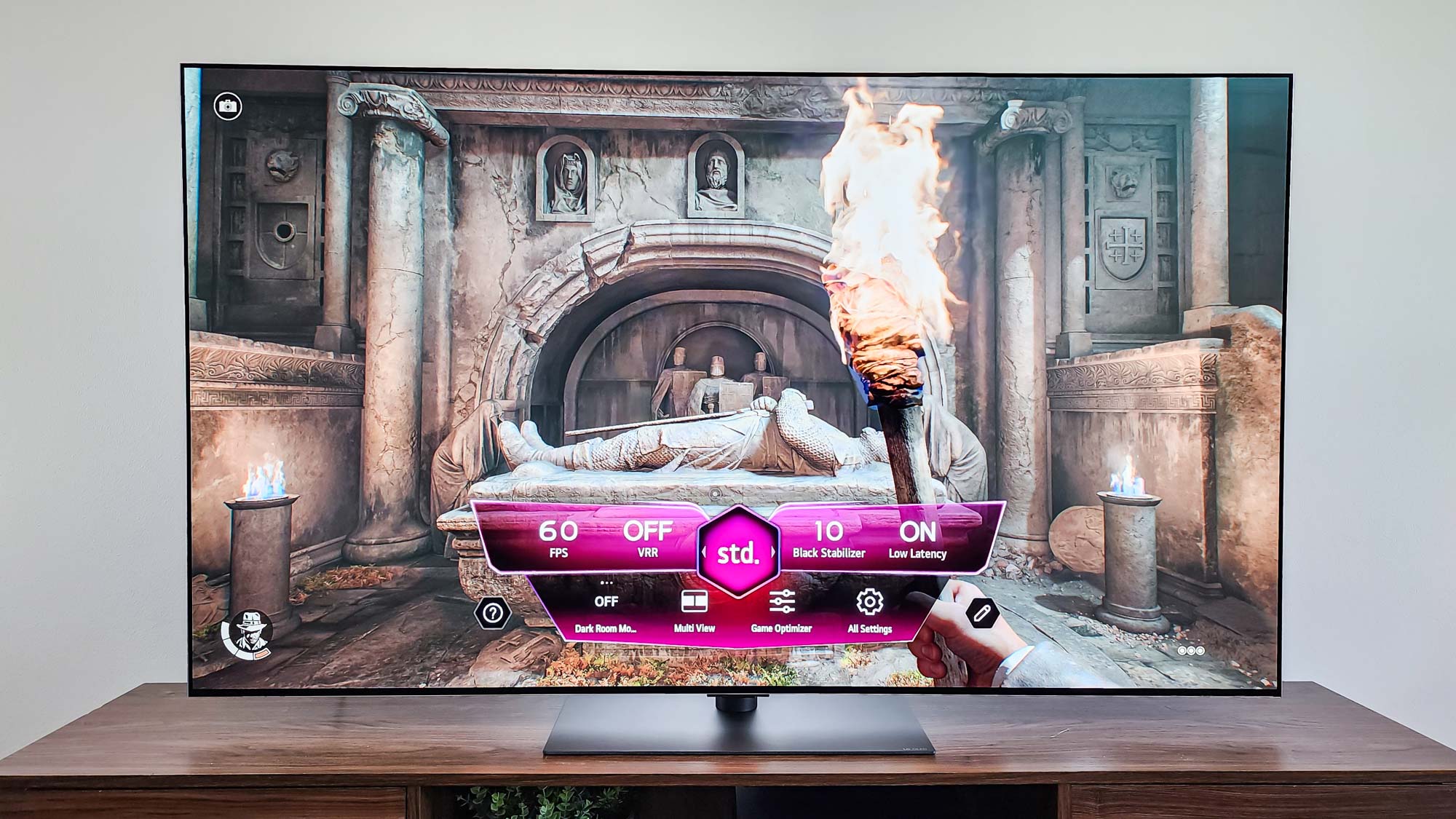

Specifications
Reasons to buy
Reasons to avoid
The LG G5 OLED is one of the best TVs LG has ever made. The 83-inch G5 is one of the priciest TVs on this list, but if you’re looking for the best gaming TV in the 83- to 85-inch size range, the G5 is your best bet.
All four of this TV’s HDMI 2.1 inputs support 4K gaming at up to 165Hz. Consoles can only reach 4K/120Hz, so the G5 has you covered when it comes to current-generation console gaming. The 165Hz spec is relevant for those who want to link up the G5 to a gaming PC.
Among the lengthy list of gaming features are the following: AMD FreeSync Premium, G-Sync compatibility, sub-10ms input latency and LG’s Game Optimizer mode.
The 83-inch LG G5 is neck and neck with the 83-inch Samsung S95F for top-OLED honors, so you can count on terrific picture quality, regardless of content. Its HDR highlight brightness rivals the S95F, and its color volume is better than any LG OLED to date.
I need to stress, however, that the G5 doesn't come with a stand inside of the box. You'll have to spend more to buy its stand separately. If you hadn't planned on wall-mounting your 83- or 85-inch TV, keep this in mind.
- Read our full LG G5 OLED review
Best 85-inch TV test results
TVs | Peak Brightness (tested) | Delta-E (tested) | Rec. 2020 Gamut Coverage (tested) | Input Lag (tested) |
LG C5 | 1,165 nits | 1.3 | 76.18% | 9.2ms |
Hisense U8QG | 3,916 nits | 2.4 | 83.98% | 9.7ms |
TCL QM6K | 695 nits | 1.0 | 71.23% | 13.1ms |
Samsung S95F | 2,138 nits | 1.2 | 90.26% | 9.5ms |
Samsung QN990F | 1,402 nits | 2.2 | 75.81% | 36.4ms |
LG G5 | 2,296 nits | 2.0 | 82.42% | 9.2ms |
Also tested
What you see above are the best 85-inch TVs we tested, but not the only 85-inch TVs we tested.
Here's a few 85-inch TVs that we've tested recently that, while good, didn't make the cut. Consider it a list of honorable mentions.
Panasonic W95A Mini-LED TV (★★★★☆)
The 85-inch Panasonic W95A is a Mini-LED with excellent performance and a suite of useful gaming features. In our tests, the W95A impressed us with HDR highlights approaching 1,500 nits (on the 65-inch model) and fantastic out-of-the-box color accuracy. Our only complaint has to do with the W95A's built-in, Amazon-based Fire TV smart platform, which isn't as smooth and easy to use as something like Google TV.
Read the full Panasonic W95A Mini-LED TV review
Hisense U9N Mini-LED TV (★★★★☆)
The Hisense U9N is a step up from the U8N. The 85-inch model is one of two available sizes (the other being 75 inches). The U9N boasts an incredibly bright display with some of the best color volume we've measured on an LED TV. Unfortunately, it's significantly more expensive than our top pick, the U8N. This limits its appeal, though it's an otherwise impressive TV with a useful set of gaming features.
Read the full Hisense U9N Mini-LED TV review
Sony Bravia 7 (★★★★☆)
Sony's mid-range Mini-LED TV is a bright, colorful mid-range TV that leverages Sony's superb picture processing, but even now, its sale price is far higher than those of rival mid-range Mini-LED models (like the TCL QM7 and the Hisense U7N). Still, if you don't mind dropping close to $2,500 on an 85-inch TV, the Bravia 7 will reward you with excellent performance and a handful of gaming features.
Read our full Sony Bravia 7 review
TCL QM7K Mini-LED TV (★★★★☆)
TCL's mid-range Mini-LED TV for 2025 is a value-packed blend of excellent performance and gaming features, all priced lower than higher-end 85-inch TVs. If you're looking for a more affordable 85-inch TV that still offers a bit of oomph when it comes to picture quality, the 85-inch QM7K is worth a look.
Read our full TCL QM7K Mini-LED TV review
How we test the best 85-inch TVs
As with all of our TV-testing processes, testing 83- and 85-inch TVs consists of two components: scientific testing and real-world use. By comparing lab-based data with extensive, hands-on use, we can get a sense of an 85-inch TV's strengths and weaknesses.
This approach also allows us to live with the TVs for a while. For 85-inch TVs, we make sure to ask ourselves the following: How does this giant screen hold up when you’re viewing it from off to the side? Does its display hardware provide decent contrast at the 85-inch level?
In our labs, we use an array of gadgets and special software to measure several key areas of performance. This includes a SpectraCal VideoForge Pro pattern generator, an X-Rite i1 Pro spectrophotometer, and Portrait Displays’ Calman TV-calibration software. We also use a Leo Bodnar 4K Input Lag Tester for input latency. For more about our testing process, check out our complete explainer about how we test.
How to choose the best 85-inch TV
Buying an 85-inch TV can be intimidating — especially if you’re upgrading from a significantly smaller-sized screen. Here’s a quick checklist of important things to consider before buying an 85-inch TV.
1. Make sure your cabinet or media console is wide enough
If you’re not planning on using one of the best TV mounts, it’s important to make sure that whatever surface you’re planning to pair it with is wide enough to accommodate the stand.
This is especially important for TV’s that use a pair of feet rather than a pedestal to prop up the panel, as those feet tend to be widely spaced. Your media console might be wide enough for the feet on the 55-inch version, but the 85-inch dimensions might prove too big.
2. Enlist some help
I suppose this goes without saying, but please, get a buddy (or two) to help you move, build, and place the TV. At 85 inches, these things are heavy. Building a TV can be awkward to begin with, but at this size, it’s a whole thing.
In addition to delivery, some retailers (like Best Buy) offer installation services, usually for a fee. If you’re buying an 85-inch TV, there’s a good chance you’re able to spend a bit more on something like this. I recommend it. Don’t hurt yourself (or your brand-new 85-inch TV).
3. If it’s an LED TV, make note of the TV’s panel type
This isn’t so much the case with OLED TVs, but an LED TV’s panel type can have a pretty significant impact on how the picture looks to people sitting off on either side of the TV. Since 85-inch TVs practically beg to be viewed in a group setting (movie night, anyone?), you ought to pay close attention to an LED TV’s panel type. There are two commonly used families.
VA-style panels allow for deeper black levels during most content, but do so at the expense of wider viewing angles. When viewing VA panels at an off-angle you’re more likely to see a drop in contrast and color saturation.
IPS/ADS-style panels tend to produce shallower black levels during average content, but they also tend to hold up much better during off-axis viewing.
Some brands are reluctant to disclose panel type, choosing instead to emphasize whatever bells, whistles, and fancy display features they’ve packed into their latest 85-inch TV. Don’t worry: By examining the TV’s subpixel structure underneath a microscope, we’re able to figure out its panel type. We’ll do our best to get to the bottom of every option.
As mentioned, outside of minor, documented instances of minor white tinting, OLED panel technologies don’t have much of an impact on off-axis viewing. When it comes to viewing angle, OLED TVs offer nearly 180° of flexibility — the best in the game. Just something to keep in mind as you shop around.
FAQs
How far away should I sit from an 85-inch TV?
There’s actually a formula to determine a TV’s ideal viewing distance based on its size. According to our guide on picking a TV size, an 85-inch TV is the sweet spot for a viewing distance of between 10 and 12 feet.
The minimum viewing distance we recommend for an 85-inch TV is between 8 and 9 feet.
Is an 85-inch TV too big?
As long as you’re planning to sit between 8 and 12 feet away from your next TV, 85 inches is perfectly reasonable. Heck, now that I’ve spent my fair share of time basking in the glory of an 85-inch HDR TV, I can say that it’s better than reasonable — it’s preferable.
Not everyone will agree. Many folks — like my colleague Ryan — aren’t so keen on the rise of big-screen TVs. As Ryan is wise to point out, these extra-large screens are heavy and often difficult to assemble. In addition, people who live in smaller homes (like a particularly cozy apartment) might not be able to accommodate an 85-inch TV.
More from Tom's Guide
Buying guides
Features
How to
Get instant access to breaking news, the hottest reviews, great deals and helpful tips.

Michael Desjardin is a Senior Editor for TVs at Tom's Guide. He's been testing and tinkering with TVs professionally for over a decade, previously for Reviewed and USA Today. Michael graduated from Emerson College where he studied media production and screenwriting. He loves cooking, zoning out to ambient music, and getting way too invested in the Red Sox. He considers himself living proof that TV doesn't necessarily rot your brain.


